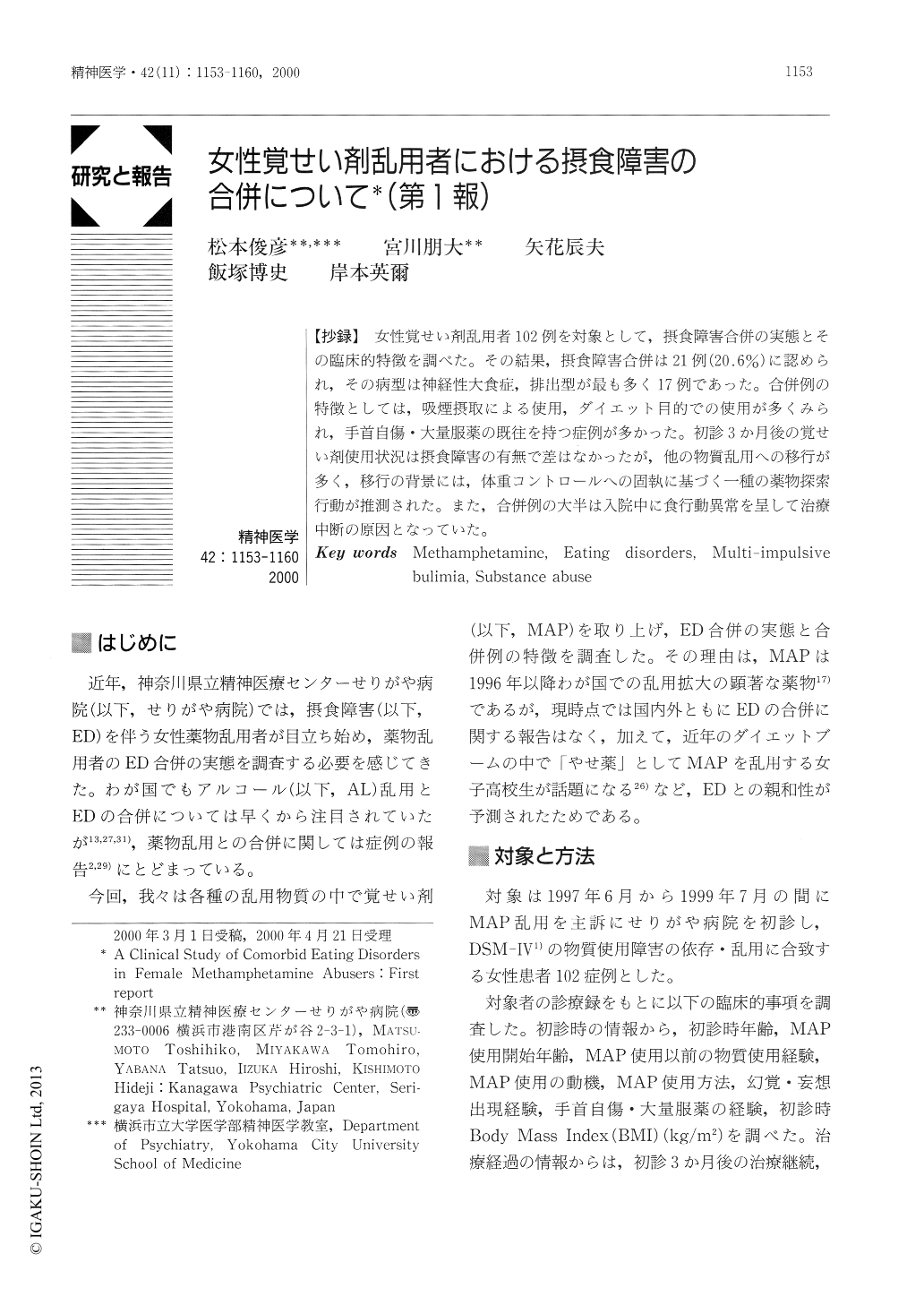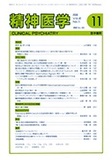Japanese
English
- 有料閲覧
- Abstract 文献概要
- 1ページ目 Look Inside
【抄録】 女性覚せい剤乱用者102例を対象として,摂食障害合併の実態とその臨床的特徴を調べた。その結果,摂食障害合併は21例(20.6%)に認められ,その病型は神経性大食症,排出型が最も多く17例であった。合併例の特徴としては,吸煙摂取による使用,ダイエット目的での使用が多くみられ,手首自傷・大量服薬の既往を持つ症例が多かった。初診3か月後の覚せい剤使用状況は摂食障害の有無で差はなかったが,他の物質乱用への移行が多く,移行の背景には,体重コントロールへの固執に基づく一種の薬物探索行動が推測された。また,合併例の大半は入院中に食行動異常を呈して治療中断の原因となっていた。
The authors studied the prevalence and the clinical features of comorbid eating disorders (ED) in female methamphetamine (MAP) abusers in Japan. Of all the female MAP abusers who had had their first consultation at the Kanagawa Psychiatric Center, Serigaya Hospital between June 1997 and July 1999, 102 patients were selected to participate in this study.
This study showed the following results :
1. There were 21 (20.6%) female MAP abusers with ED, and the diagnoses and subtypes of their ED were a) anorexia nervosa, binge eating and purging type (4 cases), and b) bulimia nervosa, purging type (17 cases).
2. Twenty-one female MAP abusers with ED, in comparison with the other 81 without ED, tended to use MAP by smoking for body-weight control and to have episodes of wristcutting and overdosing.
3. There was no difference between female MAP abusers with ED and those without ED on the prognosis after 3 months. However, female MAP abusers with ED tended to progress to other forms of substance abuse for body-weight control. It was regarded as drug-seeking behavior.
4. In the hospitalizations of female MAP abusers with ED, they often dropped out of their treatment programs due to their abnormal eating behavior (severe overeating and self-induced vomiting, food-stealing).
Based on the results, the authors speculated that smokable MAP possibly produced conditions similar to those in ED patients using diet pills, and that female MAP abusers with ED had more impulsive tendencies than those without ED.

Copyright © 2000, Igaku-Shoin Ltd. All rights reserved.


